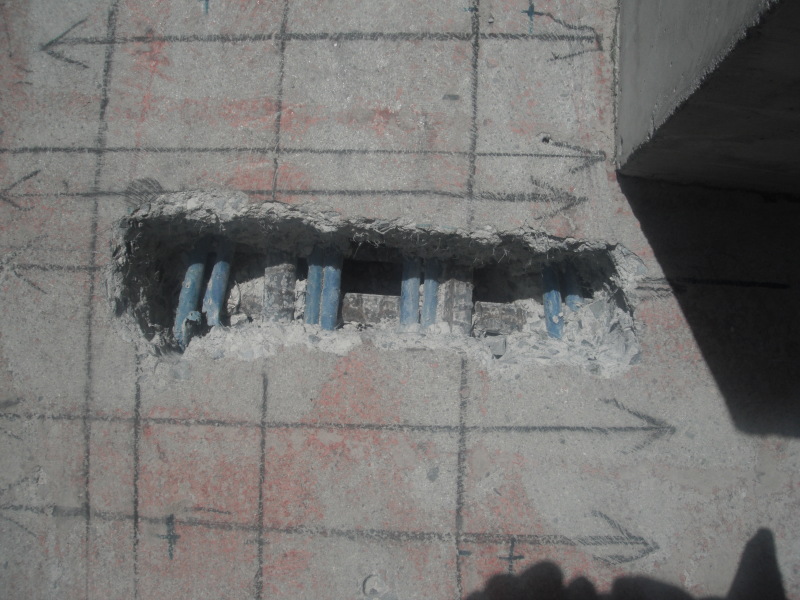If you have access to the slab edges you can visually check for grouted stressing pockets, but often facade or finishes masks them.
The more definitive method is to scan the slab, which you should be doing BEFORE any coring, anyway, IMO.
GPR (or subsurface radar) from the top of slab is usually able to locate rebar, PT and conduits. Clarity depends on the age of the concrete, depth of slab, and rebar congestion. Depending on the skill of the operator, it may be possible to differentiate between rebar and PT.
If you able to check the slab depth (maybe from an existing opening or penetration) and determine the spans, a quick L/D check may assist in making the preliminary determination that it is or isn't PT.
If in doubt, invasive probing is your best, most definitive option. provided it is done my expereicned personnel.
This photo shows a GPR scan that was unable to locate the PT tendons to a beam with 18 tendons. Only option to determine tendons was invasive probing so placements of post-installed anchor rods could be accommodated:
What size core dia are proposed?
Good luck.

